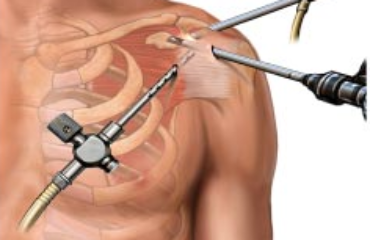The shoulder joint may feel like a sturdy joint, but it’s actually relatively unstable in construction. The joint trades stability for mobility, allowing both arms to move in almost all directions to lift objects of various weights.
The shoulder joint, as a ball and socket joint, is supported by the four rotator cuff muscles—the teres minor, subscapularis, infraspinatus and supraspinatus. The group of muscles provide the shoulder joint stability and help move the joint.
As stable as the construction of the shoulder joint seems, it also makes people prone to suffering various types of shoulder injuries. Shoulder injuries occur so often that some people don’t know how they developed that particular injury in the first place. In this article, we’re going to examine how shoulder injuries might develop in people.
About Your Shoulder Pain ~ How Shoulder Pain Develops
What happens when people develop a shoulder injury? The first sign of a shoulder injury is always some type of pain and/or discomfort within the shoulder. Most people experience some form of:
– Shoulder stiffness and/or limited mobility in the shoulder area
– Loose or ‘slippery’ feeling shoulders
– A lack of strength in the shoulder area and, to a lesser extent, the arm
People who have experienced any of the aforementioned likely have some type of shoulder-related condition that’s causing shoulder pain.
If you want to know why the shoulder gets injured so often, it’s because of the construction of the shoulder itself.
The ball joint of the upper arm is much larger than the shoulder socket that it sits in. In order for the shoulder to stay in place, it has to be anchored together by ligaments, tendons and muscles—the rotator cuff muscles, especially. Overuse of the shoulder also ‘speeds up’ age-related degeneration of its soft tissues.
Interestingly enough, shoulder pain isn’t mainly caused by injuries. It’ mainly originates from age-related degeneration of the shoulder’s surrounding soft tissues, including those found in the rotator cuff. The older people get, the more issues they experience with their shoulders. In fact, people older than 60 often experience issues with their rotator cuff.
How Shoulder Pain Progresses ~ The Clues Behind Shoulder Pain
Shoulder pain develops in a lot of people of different ages. Though, shoulder injuries are known to progress in different ways. That usually depends  on the overall health of the person with the condition or injury and the type of condition or injury they might have.
on the overall health of the person with the condition or injury and the type of condition or injury they might have.
‘Context’ clues exist to help decipher the progression of shoulder pain and also help people determine what orthopedic injury or condition they might have. These context clues describe how shoulder pain progresses.
Some of those clues include:
– Whether the pain occurs on a constant basis (might indicate a malignancy, such as cancer, of the body).
– Whether the pain gradually worsens at certain periods of the day, night or during periods of inactivity (might indicate inflammation).
– Whether the pain originates from a pre-existing or early injury or condition (might indicate supraspinatus tendinitis or frozen shoulder).
– Whether the pain and stiffness appears along with another condition (might indicate septic arthritis).
– Whether the pain affects both shoulders while experiencing pain in other parts of the body, such as the hips (might indicate polymyalgia rheumatica).
People who suspect they have an underlying condition that’s causing their shoulder pain should see an orthopedic doctor as soon as possible. Although most instances of shoulder pain are minor, moderate to severe pain may indicate a serious underlying orthopedic condition.



